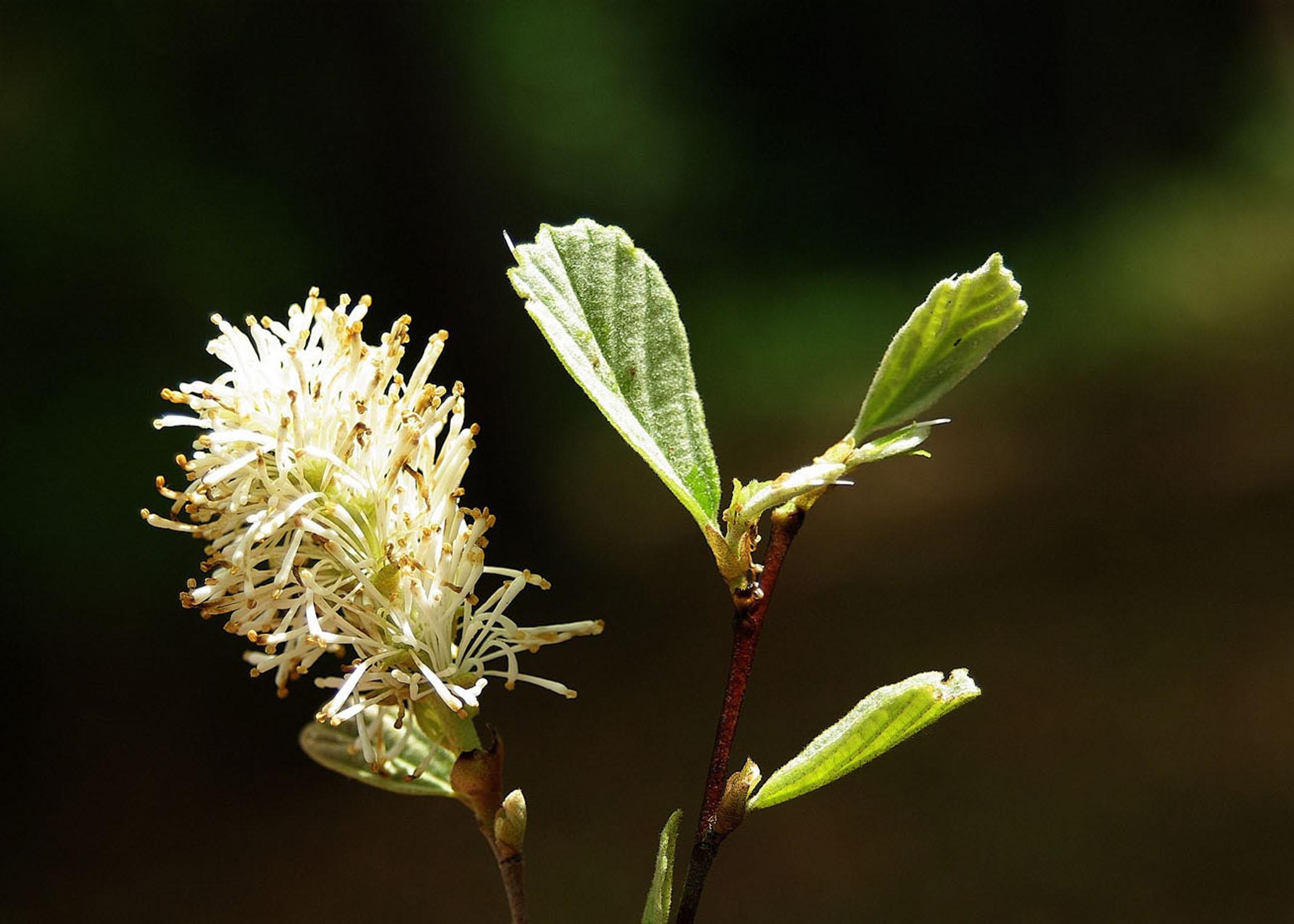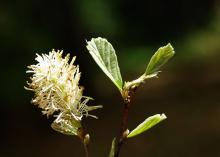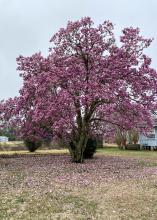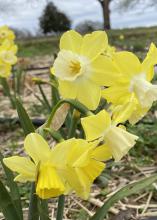Information Possibly Outdated
The information presented on this page was originally released on February 6, 2023. It may not be outdated, but please search our site for more current information. If you plan to quote or reference this information in a publication, please check with the Extension specialist or author before proceeding.
Early flowers herald spring’s soon arrival
January can feel like a long month for me. The holiday bustle is over, cold temperatures settle in, and the sky turns grey for days on end. But it doesn’t stay that way for long.
Soon, we start seeing the earliest plants awaken from their slumber -- a sign that winter wasn’t successful in completely freezing everything. These early-flowering plants support pollinators at a time of year when there are not many flowers, and they can also be among the showiest plants of the season.
Last week, I visited the Mississippi State University Southern Mississippi Branch Experiment Station in Poplarville. Out on full display was a stunning saucer magnolia, which is Magnolia ´ soulangiana. I’m not sure how old the tree was or how long ago it was planted, but I was told that even in the 1990s, it was of substantial size.
Saucer magnolias have an interesting history.
They did not exist until the 1820s when a Frenchman named Étienne Soulange-Bodin crossed China native Magnolia denudata with M. liliiflora. Today, there are more than 50 named saucer cultivars.
Unlike the U.S. native Southern magnolias, saucers are deciduous and flower heavily in the early spring before leaves emerge. Usually, they are grown as multitrunked trees. Their leaves turn yellow in the fall, though it is usually not as showy as other trees.
Like Southern magnolias, saucer magnolias are generally easy to grow but can be slow to establish in the landscape. Be sure to mulch their shallow roots to keep them cooler during the summer.
While they generally do not need much, if any, pruning, saucer magnolias should be trimmed immediately after flowering to avoid removing next spring’s flower buds. Although they are susceptible to some diseases, such as powdery mildew, they are generally resilient. The most common problem is late frosts, which will abruptly end their flowering for the year.
Saucer magnolias are among the first flowers we see in the spring, but an even earlier flowering plant is Forsythia.
These yellow-flowering shrubs usually have an unkempt shape. Like the saucer magnolia, they bloom before the leaves fully emerge. Forsythia tends to sucker at the base and form into a wide shrub. They are generally easy to grow, but if you plan to prune them, do this after flowering.
Perhaps one of my favorite flowering shrubs is an off-the-beaten-path choice: Fothergilla. These plants are not the season’s first bloomers, but they still flower early on.
Fothergilla has an unusual, bottlebrush-shaped flower that glows when the sun hits it on late winter mornings. The leaves are leathery, often a fuzzy grey-green color, and they turn vibrant fall colors of red and orange. The plants branch well and have attractive shapes in the landscape.
Another positive is that they have little to no disease or insect issues. I’m always surprised the Fothergilla is not more popular in the landscape.
One cultivar called Redneck Nation was first found by botanist Fred Nation by a river in Baldwin County, Alabama. It seems better adapted to the Southeast than other Fothergilla cultivars, and we hope to have more data as the ones we are growing at MSU get established.
These shrubs prefer to be planted in a moist area with rich soil. Redneck Nation has been reported to grow just fine in full sun in our region if it has enough moisture in the soil.
Finally, you can’t talk about early-spring flowers without mentioning daffodils. They are already up over 6 inches tall in our MSU garden.
The Jonquilla-type Narcissus is a good bet for performance, with its heat tolerance and low chill requirements. Plant them in the fall to promote flowering the following spring. Unlike many tulips, Narcissus tends to get stronger and more beautiful in the landscape with age. Plus, it has the added advantage of not being bothered by deer.
Time to get outside and enjoy the landscape coming back to life.
[EDITOR’S NOTE: Dr. Shaun Broderick is a Mississippi State University Extension Service ornamental horticulturist, Mississippi Agricultural and Forestry Experiment Station researcher and Southern Gardening guest columnist.]






